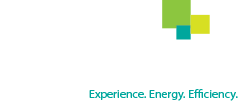Lightfair’s latest show in Philadelphia marked its 30th anniversary, and it proved to be the most advanced show of technology in the conference’s history.
Now that LED lighting has evolved to a high state of efficacy, focus has shifted to improving the quality of light produced by these new products, such as controlling glare and flicker, achieving better light distribution, and assessing the effects of lighting on human biology. Coupled with the inherent efficiency of LED, this direction in product development offers utilities the confidence that their programs will not only create energy savings into the future, but will do so with products that provide the best outcomes.
A team of lighting experts from Evergreen attended workshops and visited the exhibit floor to gain insight into the latest trends in the lighting world. We pooled our observations to recap the four main subjects presented by exhibitors and conference courses:
Controls. LEDs lend themselves to total controllability, introducing a broad range of non-energy benefits into illuminated spaces. Miniaturized, multifunction sensor/controllers integrated into luminaires at the factory, enable rapid installation time and granular sensing and control capabilities.
Intuitive setup and configuration apps downloadable to personal devices are popular, with customizable dashboard formats and reporting capabilities that provide ease of functionality for system installers, programmers and space occupants.
The lighting industry is venturing towards control component compatibility, using common communication protocols such as Zigbee, Bluetooth and BACnet that can speak with other building control systems, and allow intermixing of manufacturer components.
Connectivity. In the industry’s quest for connectivity, lighting is a uniformly spaced platform, as well as a potential power source for connectivity devices.
Educational sessions on smart parking lot lighting and connected cities illustrated the movement towards municipal connectivity, where mesh systems of networked street lighting allow sensor detection of human presence and traffic anomalies.
IoT (Internet of Things) was evident at many show booths. The concept of “everything that can be connected will be connected” seems daunting for manufacturers in an environment of continual product development. The “IoT-Ready” consortium hopes to meet this challenge and come to consensus on a common connection port that will allow future adaptation of sensors/controllers in luminaires.
Lighting for Health. Another common topic in show booths was lighting for health. This includes two distinct subjects related to control—color and light output. Reportedly, combining variances of these two has a positive effect on attention span and circadian effects in humans. While there are many studies still in process to validate these claimed advantages, initial studies show that proper selection of color and illumination levels improve attentiveness in schools and reduce stress reduction in assisted care facilities and hospitals.
Circadian lighting in particular can mimic daylight and benefit the daily human wake/sleep cycle, especially in spaces without windows. Research is looking into whether this approach may assist healing in hospitals.
Many manufacturers have introduced dim-to-warm features on LED lighting; they mimic incandescent dimming using a combination of warm and cool LEDs in varying proportions according to the dim level.
Form Factor. While there were many form factors exhibited, they seem most useful in new construction where retrofits will be tied to the 2×4 ceiling metric for the foreseeable future. However, miniaturization in manufacturing has helped the industry create variances within the 2×4 metric. For example, Cree Lighting’s Cadiant dynamic skylight is a luminaire that uses color-changing LEDs to simulate the dawn-to-dusk, ever-changing sky conditions as seen through a skylight.
Our conclusions from Lightfair are that the industry is strong, working on advancements in materials and processes, and making slow but steady progress toward standardization in LEDs and lighting controls. Efficiency keeps improving, and combined with controllability, it will leverage consistent lighting energy saving opportunities for the next several years.
To learn more about our observations from Lightfair, contact Tony Adams, national lighting manager.


Leave A Comment